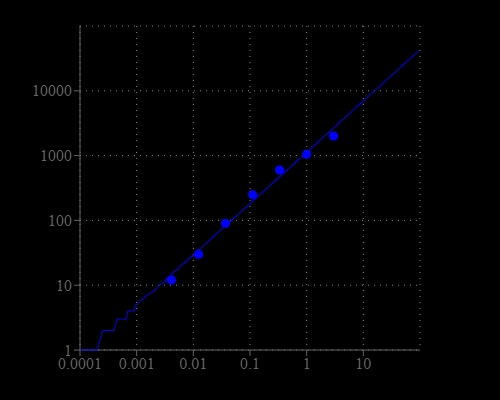Amplite® Fluorimetric Calcium Quantitation Kit
Red Fluorescence
Calcium is essential for all living organisms, particularly in cell physiology, where movement of the calcium ion Ca2+ into and out of the cytoplasm functions as a signal for many cellular processes. Calcium is the fifth most abundant element by mass in the human body, where it is a common cellular ionic messenger with many functions, and serves also as a structural element in bone. Calcium plays an important role in mediating the constriction and relaxation of blood vessels, nerve impulse transmission, muscle contraction, and hormone secretion. The serum level of calcium is closely regulated within a fairly limited range (9 to 10.5 mg/dL) in the human body. Both hypocalcaemia and hypercal caemia are serious medical disorders. Causes of low calcium levels include chronic kidney failure, vitamin D deficiency, and low blood magnesium levels that can occur in severe alcoholism. Amplite® Calcium Detection Kit using our proprietary red fluorescence probe provides a simple method for detecting calcium in physiology solutions. The fluorescent signal can be easily read by fluorescence microplate reader. The Amplite® Calcium Detection Kit can be performed in a convenient 96-well or 384-well microtiter-plate format and easily adapted to automation with no separation steps required. The assay can be completed within 30 minutes. With the Amplite® Calcium Detection Kit, we have detected as little as 0.03 mM calcium.


| Catalog | Size | Price | Quantity |
|---|---|---|---|
| 36360 | 200 Tests | Price |
Storage, safety and handling
| H-phrase | H303, H313, H333 |
| Hazard symbol | XN |
| Intended use | Research Use Only (RUO) |
| R-phrase | R20, R21, R22 |
| UNSPSC | 12352200 |
Instrument settings
| Fluorescence microplate reader | |
| Excitation | 540 nm |
| Emission | 590 nm |
| Cutoff | 570 nm |
| Recommended plate | Solid black |
Documents
Contact us
| Telephone | |
| Fax | |
| sales@aatbio.com | |
| International | See distributors |
| Bulk request | Inquire |
| Custom size | Inquire |
| Technical Support | Contact us |
| Request quotation | Request |
| Purchase order | Send to sales@aatbio.com |
| Shipping | Standard overnight for United States, inquire for international |
Page updated on December 24, 2025
